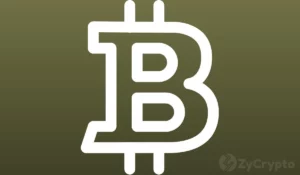
What Are Casascius Bitcoins and Why Are They So Expensive?
In the vast expanse of cryptocurrency assets, there exist a select few that defy explanation due to their rarity, exclusivity, or sheer audacity. One such enigmatic entity is the Casascius Bitcoin, an artifact whose mystique has only grown in the years since its inception in 2011.
For the uninitiated, Casascius Bitcoins are essentially the Fabergé eggs of the cryptocurrency world – an early experiment by Utah resident Mike Caldwell in creating tangible representations of Bitcoin. Launched on BitcoinTalk, these unique coins quickly gained popularity, offering a range of denominations including ₿ 10, ₿ 25, ₿ 100, and even ₿ 1,000 versions, as well as gold bar lookalikes.
The key difference that sets Casascius Bitcoins apart from other physical representations is the inclusion of redeemable Bitcoin within each coin. This private key resides beneath a holographic layer embedded on the surface of the coin, requiring the removal of this hologram to access the stored value.
Caldwell’s initial enthusiasm was short-lived, as the Financial Crimes Enforcement Network (FinCEN) brought an abrupt halt to production in November 2013. It seems that the sale of these coins with their Bitcoin contents effectively qualified Caldwell as a money transmitting business, necessitating federal registration and potentially state licenses – an unforeseen complication at the time.
In hindsight, this intervention proved a masterstroke for collectors and enthusiasts alike. By ceasing production before the government stepped in, Caldwell inadvertently imbued his creations with a sense of exclusivity and scarcity, driving up demand and value exponentially. A mere 34% of all pre-November 2013 coins have been opened, an astonishing statistic given the allure of instant liquidation.
Of the original items produced, only two of Caldwell’s five flagship ₿ 1,000 bars remain untouched, now valuing at a staggering $92 million each – an astronomical figure that underscores the enduring impact of this singular decision. It is little wonder then, as some have their innards removed, why pre-2013 editions occasionally surface on platforms like eBay, commanding massive premiums.
The fact that over 65% of these original items remain unopened speaks to both the allure and mystique surrounding Casascius Bitcoins. As an example, a recent peeling event occurred in October this year, further fueling speculation about their long-term viability.
For now, it is clear that Caldwell’s pioneering endeavor will continue to captivate enthusiasts and collectors for years to come – a testament not only to the allure of rarity but also the transformative power of government intervention in shaping the trajectory of cryptocurrency history.
Source: fullycrypto.com


